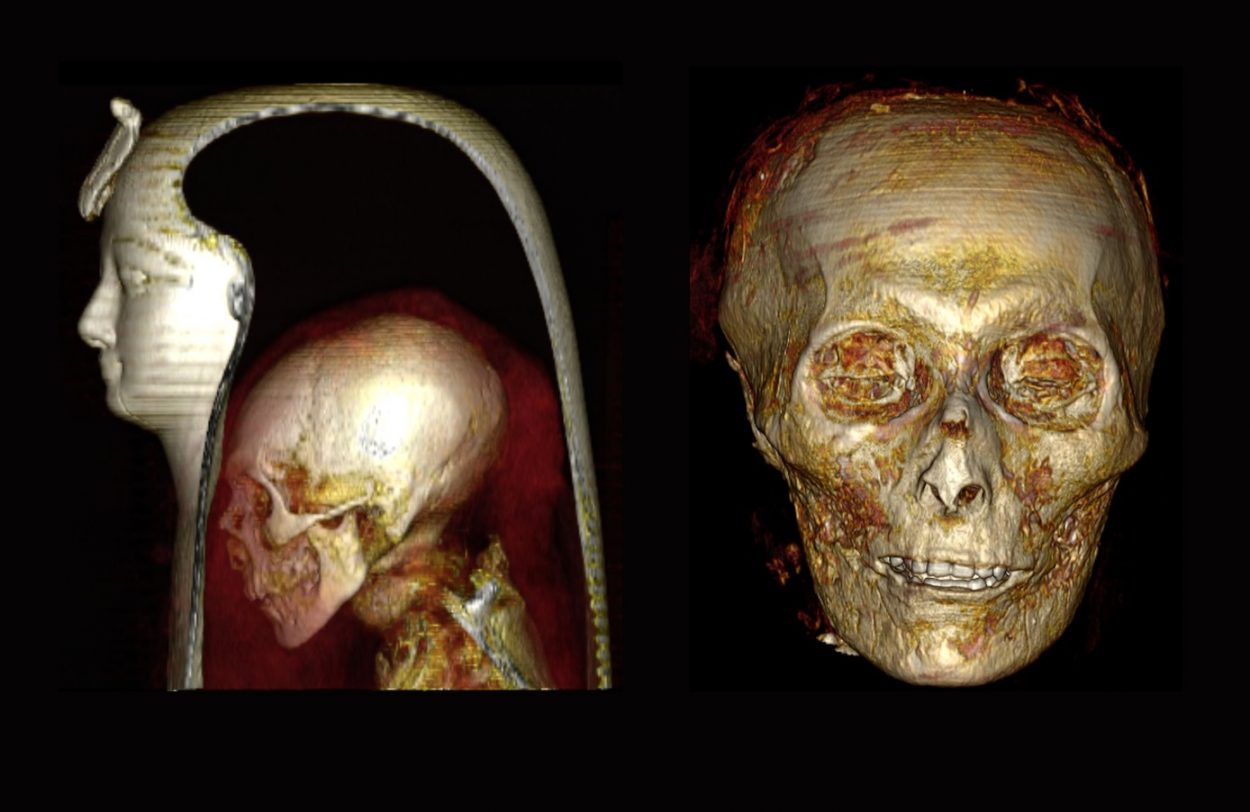Scientists from Egypt have used three-dimensional CT (computed tomography) scanning to ‘digitally unwrap’ the royal mummy of Amenhotep I.
Amenhotep I (whose name means ‘Amun is satisfied’) was the second Pharaoh of the 18th Dynasty, who ruled Egypt for around 21 years until his death in 1504 BC. Under his rule, Amenhotep ordered a religious building spree and led successful military expeditions to Libya and northern Sudan.
Hieroglyphics have described how during the later 21st dynasty, priests restored and reburied royal mummies (including Amenhotep I) to repair the damage done by grave robbers.
“This fact that Amenhotep I’s mummy had never been unwrapped in modern times gave us a unique opportunity: not just to study how he had originally been mummified and buried, but also how he had been treated and reburied twice centuries after his death by High Priests of Amun,” said Dr Sahar Saleem, professor of radiology at the Faculty of Medicine at Cairo University and the radiologist of the Egyptian Mummy Project.
“By digitally unwrapping of the mummy and ‘peeling off’ its virtual layers – the facemask, the bandages, and the mummy itself – we could study this well-preserved pharaoh in unprecedented detail. Our study showed that Amenhotep I was approximately 35 years old when he died. He was approximately 169cm tall, circumcised, and had good teeth. Within his wrappings, he wore 30 amulets and a unique golden girdle with gold beads.” said Saleem.
Saleem continued: “We couldn’t find any wounds or disfigurement due to disease to justify the cause of death, except numerous mutilations post mortem, presumably by grave robbers after his first burial. His entrails had been removed by the first mummifiers, but not his brain or heart.”
Sahar Saleem and her co-author Egyptologist Dr Zahi Hawass, had previously speculated that the main intention of the restorers from the 11th century was to reuse royal burial equipment for later pharaohs. But here they disprove their own theory.
“We show that at least for Amenhotep I, the priests of the 21st dynasty lovingly repaired the injuries inflicted by the tomb robbers, restored his mummy to its former glory, and preserved the magnificent jewellery and amulets in place,” said Saleem.
Hawass and Saleem studied more than 40 royal mummies of the New Kingdom in the Egyptian Antiquity Ministry Project that was launched since 2005. Twenty-two royal mummies, including that of Amenhotep I were transferred in April 2021 to a new museum in Cairo. The face of the mummy of Amenhotep I with its mask was the icon of the spectacular ‘Royal Golden Mummy Parade’ on March 3rd, 2021 in Cairo.
“We show that CT imaging can be profitably used in anthropological and archaeological studies on mummies, including those from other civilisations, for example Peru,” concluded Saleem and Hawass.
Header Image Credit : S. Saleem and Z. Hawass







